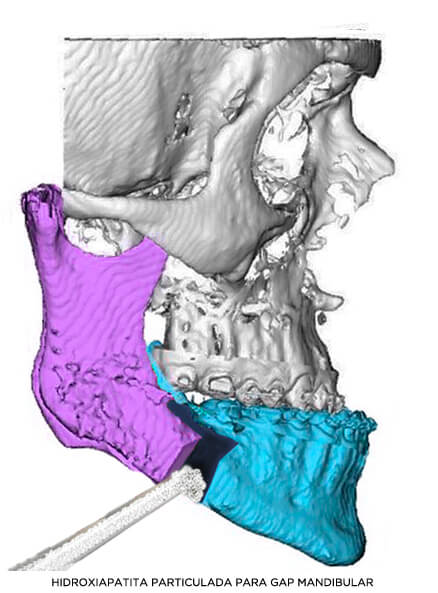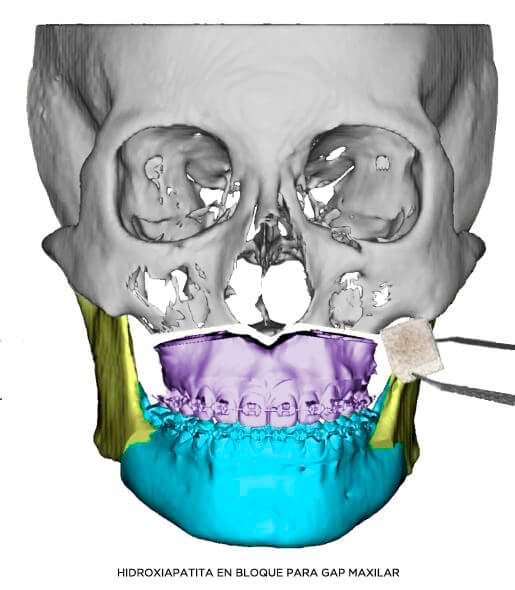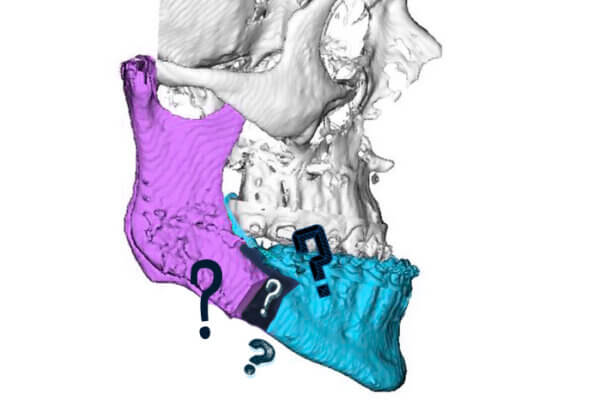During orthofacial surgery, the surgeon can create spaces between the facial bones that have been repositioned to achieve the desired correction. To ensure proper healing and stability of the jaw or maxillary bones, it is often necessary to fill these gaps with some type of material.
Any space greater than 2mm must be filled, since beyond this distance, the bone cannot regenerate spontaneously.

 In our center, the material of choice to fill the spaces between osteotomies is hydroxyapatite, a biocompatible material of mineral origin, which has great structural resistance and is an osteoconductor, i.e. a material which creates a framework that the body fills in with biological material over time.
In our center, the material of choice to fill the spaces between osteotomies is hydroxyapatite, a biocompatible material of mineral origin, which has great structural resistance and is an osteoconductor, i.e. a material which creates a framework that the body fills in with biological material over time.
Thus, the hydroxyapatite will be gradually transformed into bone, and after a period of time - which can range from 6 months to a year- this transformation will be complete and the patient's bone will once again be a single piece.
Why not use bone grafts?
Although autologous bone grafts are ideal in terms of biocompatibility, it is also true that they have a longer period of healing and integration with surrounding tissues. Additionally, removing a bone graft can be a rather cumbersome process for the patient, adding considerable discomfort to the already uncomfortable postoperative process.
The advantages of using hydroxyapatite is that we have excellent results with less morbidity, which is why we use this material in the vast majority of our interventions, basically limiting the use of autologous bone grafts to two scenarios:
• When there is excess bone during the same intervention (in reduction procedures)
• In cases where the patient has poor quality bones or an increased risk of infection.
In the end, the choice of surgical gap-filling material in orthognathic/orthofacial surgery depends on several factors, including the size and location of the gap, the general health of the patient, and the surgeon's preference.








